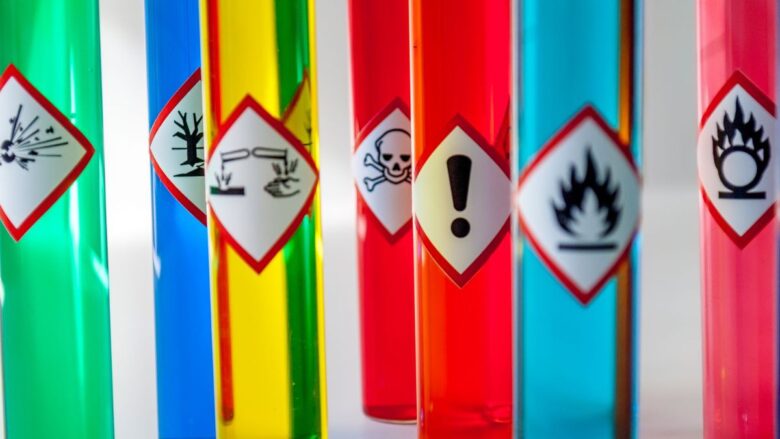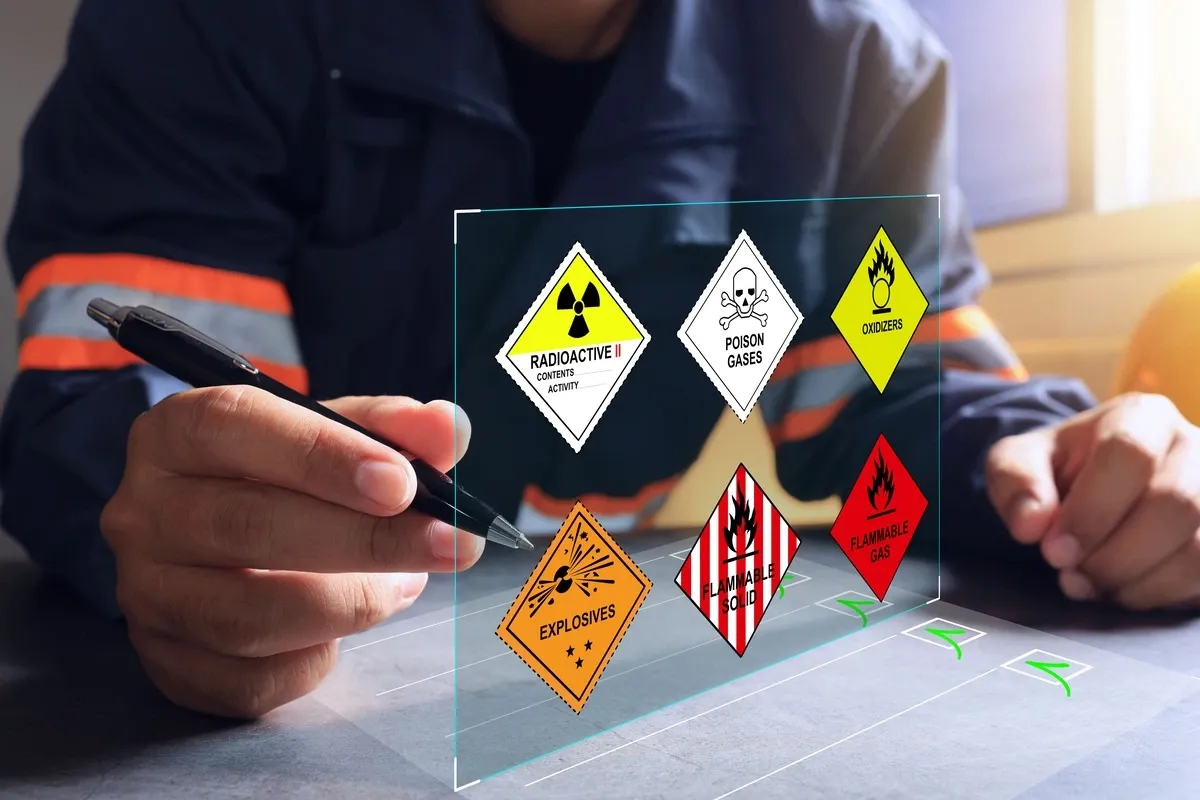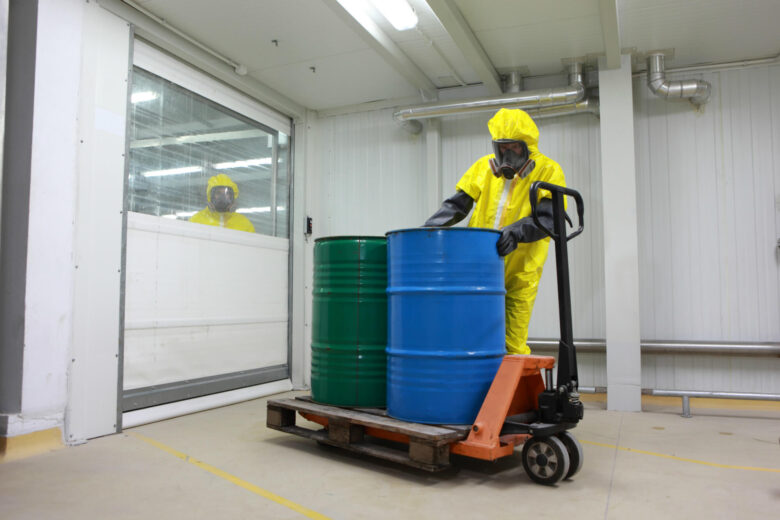Imagine you’re fumbling with a canister of hazardous material, scurrying to find a safe place to keep it. Your heart jumps at every slight fumble. This terrifying scenario emphasizes that a simple mistake can lead to a catastrophic incident. Delve into the importance and various aspects of effective storage solutions for hazardous materials.
Contents
Importance of Hazardous Material Storage
Present almost everywhere, from homes to industrial complexes, handling hazardous materials is a part of everyday lives. But their storage isn’t just about convenience; its paramount purpose is safety. Not only do they pose severe risks upon immediate contact, but mishandled materials can lead to environmental contamination and lingering health effects.
By soundly storing hazardous material, you curtail accidents and protect people nearby. Besides human risks, businesses also face grave consequences in case of an incident. Costly cleaning processes, expensive lawsuits and irreparable reputational damage are all possible outcomes of improper storage. Rightfully so, most industries regard secure storage as an indispensable infrastructure requirement.
Moreover, optimized storage reduces wastage and ensures resource efficiency, as safely stored materials maintain their potency over prolonged periods. Hazardous material management has an economical benefit too – it prevents fines stemming from regulatory non-compliance.
Although necessary everywhere, certain sectors such as healthcare, manufacturing, construction and agriculture stress proper storage even more due to the nature of hazards they handle. Regardless of the type or volume of materials in your custody, safe storage is critical. For an overview on how this can be achieved head over here: https://www.watertankfactory.com.au/types/diesel-fuel-chemical-storage-tanks/.
Classification of Hazardous Materials

Source: gaiaca.com
To determine the right storage, it’s mandatory first to classify the hazardous material. The globally recognized system by Global Harmonization System divides dangers into physical, health, environmental, and additional hazards. This classification inspects the substance’s properties and inherent risks.
Physical hazards encompass substances capable of causing damage to nearby objects or people through explosive or reactive behavior. Flammable liquids, combustible materials, corrosive substances form part of this category.
Health hazards include substances that induce harm upon inhalation, ingestion or skin contact. They are further categorized into acute and chronic hazards depending on their impact period. These can be carcinogens, toxins or irritants.
Environmental hazards pose a substantial threat to environmental health – terrestrial or aquatic. Pesticides or non-biodegradable substances are often culprits here. Lastly, other hazards cover those not fitting into these categories such as narcotic effects or ozone layer depletion potential.
The crux is each hazard type carries distinctive threats and calls for different containment practices. It underscores the need for careful classification before storage selection.
Legal Requirements for Storage

Source: marineregulations.news
Laws for hazardous material storage recognize its potential dangers and hence exist at all levels – international, national, state and local. Non-compliance isn’t an option but a strict legal obligation with steep penalties.
The International Maritime Dangerous Goods Code looks after transportation-related regulations. Domestically in the United States, EPA (Environmental Protection Agency), DOT (Department of Transportation) and OSHA (Occupational Safety and Health Administration) outline specific rules for storage and handling.
Beyond federal laws, it’s absolutely necessary to acquaint oneself with local laws too. For example, storage within city limits might have zoning regulations concerning placement of storage containers or mandatory employee training in dealing with relevant hazards.
All these standards collectively aim to ensure safe management right from procurement to disposal. Above all, they are continuously updated and refer to industry best practices, rendering it crucial for everyone involved to stay abreast.
Types of Hazardous Material Containers
Providing an array of options, modern container technology caters to almost every hazard class. Material compatibility with hazards is pivotal here. Hence various materials such as stainless steel, polyethylene and fibreboard form common container choices today.
Drums and barrels serve bulk liquid or solid hazards well. Cylinders work great for gaseous materials while smaller containers or bottles suit less voluminous substances. Diesel fuel tanks come specifically designed to veil volatility.
Apart from conventional shapes, secondary containment options like spill pallets or bunds add an extra safety layer often required by codes. Similarly, market designs incorporate safety features like fire-proof insulation or anti-static build for high-risk hazards.
Remember, container selection is a critical determinant of your safety approach’s effectiveness. Making an informed choice here can make or break your hazard management strategy.
Protection and Safety Measures

Source: achilles.com
Hazardous materials pose an inherent risk that calls for vigilant protection and safety measures. Customized measures are required, based on the type and nature of the hazard. In managing physical hazards such as flammable liquids, it is critical to eliminate sources of ignition nearby. This involves installing flame arresters, grounding and bonding containers and providing fire fighting equipment onsite.
For health hazards, providing personal protection equipment (PPE) – including masks, gloves, goggles, and protective clothing – can shield personnel from exposure. Also, ensure that containment methods facilitate rapid neutralization or safe disposal of substances in case of accidental release.
Environmental hazards call for proactive strategies to avoid leaks reaching the environment. Safeguard biodiversity by avoiding location near water bodies and have efficient waste management protocol at hand.
Ensure appropriate sign postings indicating the nature of stored hazardous materials along with mandatory safety measures. These signs serve as informational tools for employees and visitors alike, helping avert accidents due to ignorance.
Maintenance of Storage Areas

Source: safeopedia.com
In the context of hazardous materials storage areas, maintenance means more than mere cleanliness. Regular checks on storage containers are vital to detect early signs of damage such as corrosion or leaks. Timely replacements or repairs help keep accidents at bay.
Beyond the physical infrastructure, it’s necessary to keep updated inventory records. Thorough documentation helps track expiration dates and ensures outdated materials are disposed properly, reducing associated risks.
No less important are routines for safety drills simulating potential disaster situations. These practices not only prepare employees for emergencies but also highlight potential gaps in existing protocols warranting improvements.
Training for Safe Handling
Training forms the backbone of hazardous material management. It imparts hands-on skills on safe handling and foundational knowledge of potential dangers involved.
In line with OSHA requirements, training should first orient employees to identify different hazard symbols and understand Material Safety Data Sheets (MSDS). Learning about safety measures specific to each hazard type they handle is essential too.
Besides initial training, refresher courses at regular intervals keep personnel updated on best practices and regulatory changes. In-depth training on emergency protocols such as spill management helps build confidence in reacting appropriately during real situations.
The human aspect here cannot be overstressed; even well-designed storage solutions fall short without a well-informed team behind them.
The Last Words
Dealing with hazardous materials involves intricate layers of measures. Finding the right fit for your needs requires thorough analysis and possibly consultation with experts. Above all, creating an aware and trained team forms the essence of any effective storage system.
It is only through constant vigilance towards safety can people respect the inherent risks these materials pose. Keep up-to-date, stay alert, but remember that safety is everyone’s responsibility.
